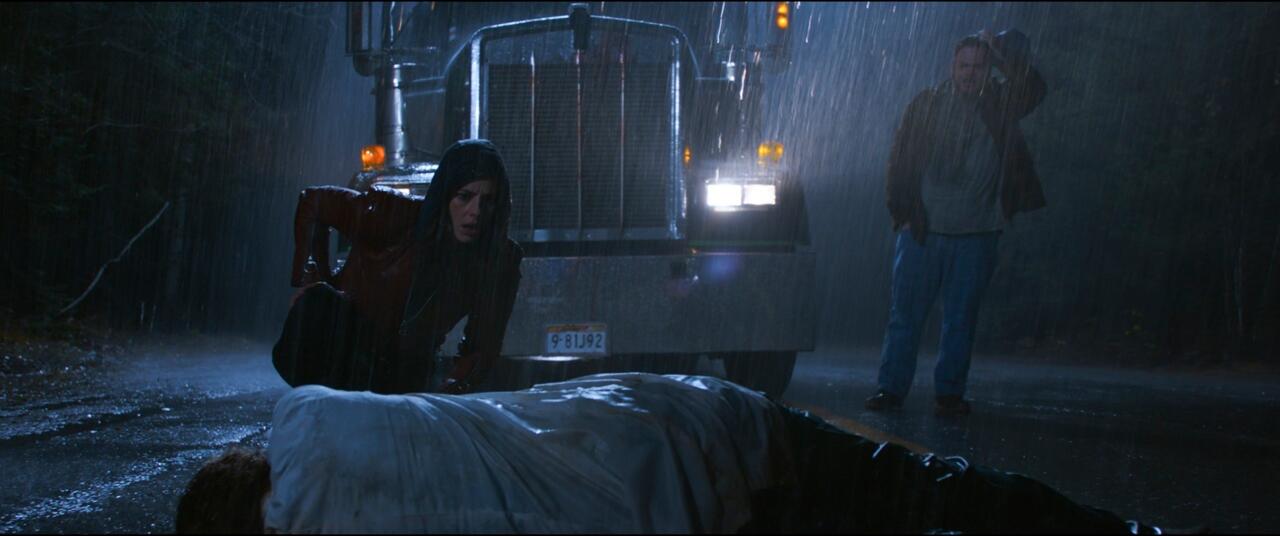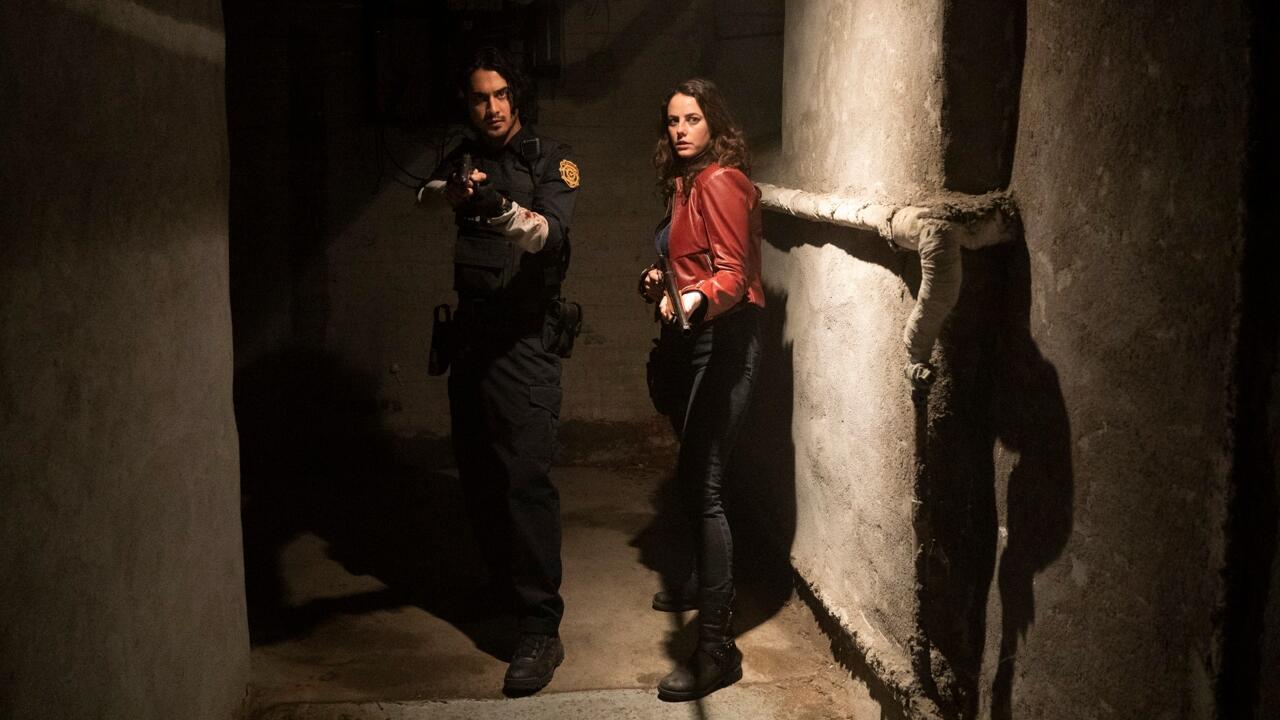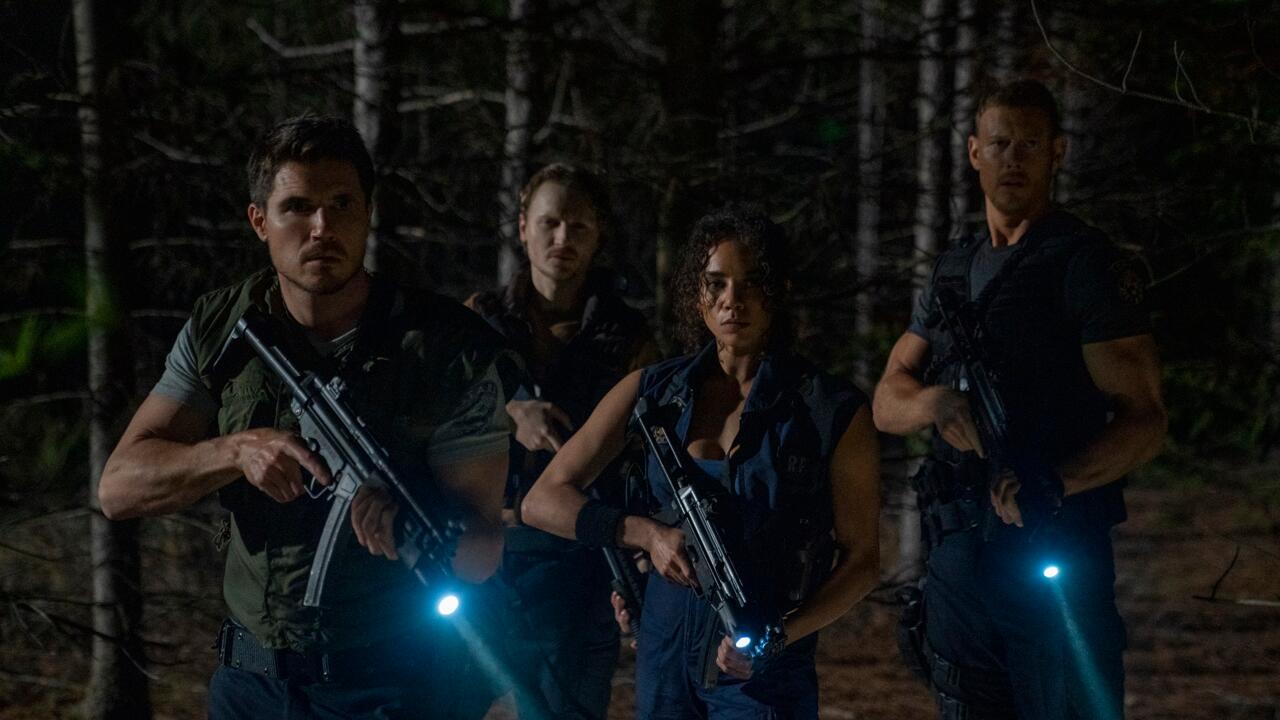The struggle of adapting works that already have built-in fanbases is one of appeasing people who already know what they like. It was something that dogged the previous six movies in the Resident Evil film series–those movies are big, goofy fun, but they have very little to do with what fans of Resident Evil like about Resident Evil. The live-action franchise’s reboot, Resident Evil: Welcome To Raccoon City goes hard in the other direction, but proves that sometimes being too faithful to the original work has its pitfalls, too.
Taking the Resident Evil games and mythos seriously is clearly a major consideration for Welcome To Raccoon City. This is a movie that adapts not one but two games in the franchise–Resident Evil and Resident Evil 2–and is littered with callbacks and references to both. Some sets and locations have been faithfully recreated, like the foyer of the Spencer Mansion or the front desk of the Raccoon City Police Department. Characters are similar to those of the games and find themselves in similar circumstances, with a lot of the same plot beats. It’s an adaptation that will have Resident Evil fans pointing at the screen, Leonardo DiCaprio meme-style, as they recognize Easter egg after Easter egg from the game series.
That’s not to say that Welcome To Raccoon City is a straight retelling of RE and RE2, however. It takes a few liberties with the characters and the setting, mostly for the better. One of the biggest, although perhaps the weakest, is that it smashes the two games’ stories together so they happen simultaneously during the same night in 1997, presumably because neither game has all that much actual story when you cut out wandering through darkened halls and shooting a lot of zombies. Here, we find a Raccoon City more or less propped up by the industrial and pharmaceutical giant Umbrella Corporation, but at the start of the film, the company is looking to relocate its headquarters. In doing so, Umbrella is economically killing the town.
Of course, the premise of the movie is that Umbrella is also literally killing the town, and already, spooky things are affecting Raccoon City’s inhabitants (spoiler alert: They’re becoming zombies). The setup for the movie seems poised to make a comment about corporate ravages on Rust Belt America–the only people still stuck in the old company town of Raccoon City are those too poor to leave, where they’re about to be subject to various horrors of unethical science run amok. Like a lot of things in Welcome To Raccoon City, however, the idea is mostly just gestured at, and never really becomes an essential part of the story.

Director and screenwriter Johannes Roberts also makes adjustments to Resident Evil’s various protagonists, which inject new, human-feeling conflicts and motivations into a bunch of fairly thin game characters. The primary changes are to Chris and Claire Redfield (Robbie Amell and Kaya Scodelario), stars of Resident Evil and Resident Evil 2, respectively. In this telling, the Redfield kids grew up in a Raccoon City orphanage run by Umbrella and headed up by scientist William Birkin (Neal McDonough). Claire ran away from the orphanage at some point during her childhood, but Chris stayed behind, developing a sort of father-son relationship with Birkin and benefiting from Umbrella benevolence that put him through both school and the Raccoon police academy. Those setups bring a lot of potential to the movie, giving new facets to the personalities of these characters and providing them with new connections and spins on their underlying motivations, especially if you’re familiar with the games’ stories. When Claire returns to Raccoon insisting that Umbrella is up to no good, Chris dismisses her, inherently believing in the company and people who have supported him throughout his life.
Unfortunately, while Welcome To Raccoon City has a lot of potentially good character ideas, it doesn’t give them the space they need to breathe and grow. We see early on that Chris and Birkin have a close relationship, but the two characters only interact once, in a moment that could have been powerful if the movie had spent time developing their history. Similarly, Claire’s relationship with her brother is a strained one, which could add drama as the town starts to fill with monsters. But the dictates of adapting the games mean that the two characters have to be separated, since canonically, Chris heads to one zombie-filled location and Claire to another. Neither really has time to worry about the other, so the plot point of conflict between them has almost no effect on either of them.
Even Wesker (Tom Hopper), the long-running antagonist of the Resident Evil franchise, gets an interesting spin in Welcome To Raccoon City that feels like it should have led to more. The movie suggests a bit of a love triangle featuring him, Chris, and their cop colleague and Resident Evil 1 protagonist Jill Valentine (Hannah John-Kamen), which would be another great way to create conflicts between a group of ostensible friends caught in the middle of a zombie apocalypse. But it all amounts to throwaway lines and meaningful glances that barely impact the characters much, because we don’t spend enough time with any of them for these things to matter before they’re swept up in ensuing chaos.
It’s a shame, because the characters and their possibilities are the best things that Welcome To Raccoon City brings to the adaptation. The film’s cast commit to the goofiness and horror of Resident Evil in equal measure, and they often bring believability to the otherwise ridiculous premise. Family man Birkin seems like a great dad to his actual kid, Sherry (Holly de Barros), in the one real scene they spend together–which makes you wonder what his relationship with Chris was like. Wesker is amiable among his cop buds, and his role in the story does away with all his mustache-twirling in the games, which leaves the viewer longing for more character development to flesh out what he’s actually like. A lot of effort goes into establishing Leon Kennedy (Avan Jogia), Resident Evil 2’s other protagonist, as being so green an addition to the police force that he’s comically out of his depth, but he mostly just hangs around to be the butt of jokes (although a lot of those jokes are fun).

Generally, there’s just too much going on, and not enough focus on any of it. One of the most harrowing sequences in the movie sees Chris, Jill, Wesker, and the rest of the STARS unit of the Raccoon City police heading into the Spencer Mansion, but there’s never a good sense of why the place really matters. Meanwhile, there’s some serious tonal whiplash as zombies start to arrive at the police station, where everyone is so nonplussed about people eating each other that you might as well be watching a different movie.
There is a tone here that sometimes serves both sides of the film, though–it just feels like not enough time is spent establishing it. Resident Evil is, after all, not something to be taken too seriously, being a series of games about mutated people murdering each other and featuring some hall of famers in the annals of dorky video game dialogue. When Welcome To Raccoon City hits the right balance of comedy and frights, it’s pretty enjoyable. There’s a fun sequence in which police Chief Irons (Donal Logue) dresses down Wesker for checking his pager during a briefing, spouting a rapid-fire series of ’90s references before capping it off with a specific callout to a Journey song. A couple of scenes later, Irons’ car is blaring that self-same Journey track as he drives for his life, with Umbrella soldiers unloading on it with automatic weapons as they seek to curb the Raccoon City outbreak. When the movie is self-aware, both in playing up its more ridiculous aspects and its spookier ones, it can be a lot of fun.
And a few moments can be genuinely frightening, especially since the movie works hard to capture that original Resident Evil feeling of people trapped in a haunted house. Sequences in the Spencer Mansion do a great job of matching the darkened, closed-in sense of the mansion from the games, and the genuine deadliness of what’s contained within it. It helps that Amell and John-Kamen sell the intense fear of facing off against hidden zombies lurking in the darkness.
But there’s just so much time dedicated to fan service and meaningless callbacks, and so little dedicated to actual scares or paying off interesting character development. Before long, you’ve got five or six major personalities from the game series all running around, competing for screen time, and any fear that they’re in real danger goes out the window–we know the movie is telling roughly the same story as the games, and so we have a good sense of who’s off-limits from zombie bites and monster claws.

The movie’s other faults would be easier to overlook if there were more opportunities to watch scary creatures chomp on fun characters, but there are altogether too few monsters on offer in a movie about people getting ripped apart by monsters. More, in general, really would have helped here, especially because for a story about an entire city succumbing to a mutating zombie virus, the whole affair feels cramped.
Fans of Resident Evil will likely enjoy that Welcome To Raccoon City is a closer conception of the horror ideas of the games, as well as their lighter side, than past adaptations. Its take on Resident Evil’s characters are similarly close to the source material, made all the better by some solid changes in backstory and a cast that is both having fun and selling the scares. But the movie never seems willing to lean into its good ideas, or to risk coloring too far out of the lines established by the game series. It leaves Welcome To Raccoon City feeling like pieces are missing. There’s a great Resident Evil adaptation here, if only the movie were willing to really go for it. Instead, it’s more concerned with making sure the costumes and sets are on-point, rather than the story.
Source: GameSpot


